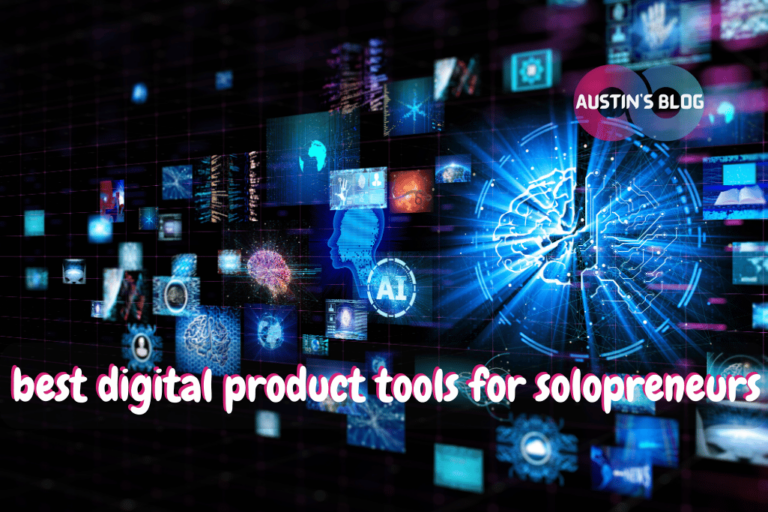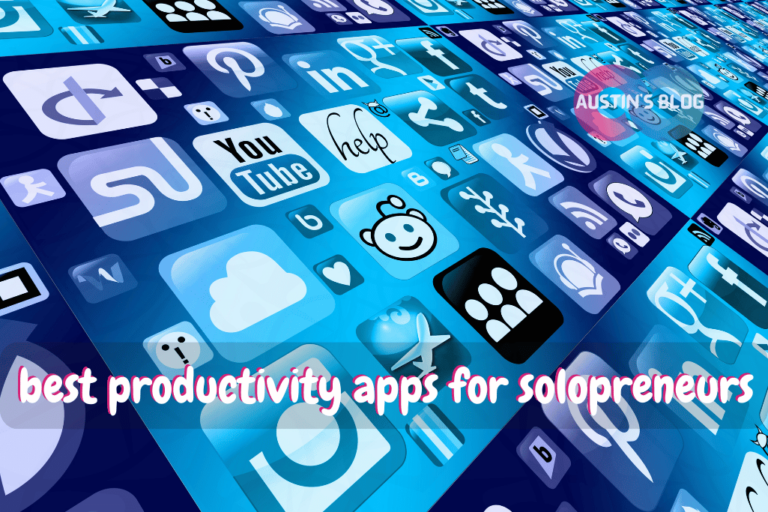Hottest Marketing Trends: What You Need to Know Right Now
Introduction
Hold onto your hats, marketing mavens! We’re diving headfirst into the wild world of 2025’s marketing trends, and boy, is it a rollercoaster!
A rollercoster of the hottest marketing trends. Did you know that there are now over 5.07 billion active social media users worldwide? That’s a staggering 62% of the global population! [1]
But it’s not just about the numbers – it’s about how we’re connecting, engaging, and yes, marketing in this digital age.
From the latest social media crazes to mind-bending tech innovations, we’re about to embark on a journey through the marketing landscape of tomorrow. So, grab your virtual reality headsets and AI assistants, folks – we’re going trend-hunting!
Key Takeaways
- Video marketing is the dominant trend, crucial for the next decade
- AI tools are revolutionizing marketing by enhancing personalization and efficiency
- Voice search optimization is a rising priority for future-ready marketers
Social Media Trends: The New Frontiers of Digital Connection
Social media trends in 2025 are all about engaging content, increased use of video, and more authentic interactions. Let’s dive into the specifics of these exciting changes.
The Rise of Ephemeral Content and Its Impact on Engagement
Ephemeral content, like Stories on Instagram and Snapchat, is booming. These temporary posts create a sense of urgency and exclusivity. People know they need to check them out fast before they disappear.
This type of content often feels more personal and real. It encourages viewers to interact quickly and frequently.
Brands utilizing ephemeral content report higher engagement rates. In 2025, expect more businesses to leverage Stories to keep their audience hooked.
Social Commerce: Turning Likes Into Purchases
Social commerce is changing how you shop online. Platforms like Instagram and TikTok now let users purchase without leaving the app.
This seamless integration makes buying products super easy.
People trust brands they see on social media more than traditional ads. Clear visuals, user reviews, and influencer recommendations help turn likes into sales.
Companies investing in social commerce see improved conversion rates and customer loyalty.
The Growing Importance of Micro-Influencers and Niche Communities
Micro-influencers have smaller but highly engaged audiences. They often focus on specific niches, making their endorsements feel more authentic and relatable.
Unlike big celebrities, micro-influencers interact with followers closely, building stronger trust.
Brands partnering with micro-influencers see better ROI. Niche communities follow these influencers for genuine recommendations.
In 2025, expect more businesses focusing on micro-influencers to reach targeted audiences effectively.
Video Dominance: Short-Form Content and Live Streaming
Video content is still king in 2025. Short-form videos on platforms like TikTok and Instagram Reels are highly popular. They’re quick, entertaining, and perfect for today’s fast-paced world.
Live streaming is also growing. Platforms like Facebook and YouTube allow real-time interaction with audiences.
Businesses use live streams for product launches, Q&A sessions, and behind-the-scenes looks.
Video content, both short and live, drives higher engagement and keeps audiences coming back.
Dark Social and the Shift Towards Private Messaging Platforms
Dark social refers to private channels like WhatsApp, Messenger, and direct messages. These platforms are used for sharing content away from public feeds.
In 2025, dark social is becoming essential for marketers.
People are moving away from public posts to more private interactions. Brands need to adapt by engaging users on these platforms.
Personalized communication and customer service through private messages are key strategies here. Dark social offers a more intimate way to connect with your audience.
Leveraging Social Media Trends for Business Growth
To grow your business using social media, it’s essential to use current trends like interactive AR experiences and video marketing.
Build authentic relationships with your audience and make shopping seamless on these platforms.
Strategies for Creating Authentic, User-Generated Content
User-generated content (UGC) is a powerful way to build trust. People love seeing real customers using your products.
Encourage your audience to share their experiences by creating contests and hashtag campaigns. Highlight these posts on your brand’s page to show appreciation.
Talk to your customers and ask them to share photos or videos. Offer discounts or features in return.
Authentic reviews and user stories are more trustworthy than traditional ads. This approach will not only engage but also expand your audience.
Implementing Shoppable Posts and Streamlined Social Buying Experiences
Shoppable posts turn browsing into buying by allowing users to purchase products directly from your posts.
Instagram and Facebook are popular platforms for this. Make shopping easy by tagging products in your photos and videos.
Keep the process simple.
The fewer clicks, the better. Use clear calls-to-action that prompt immediate purchase. Mix product showcases with lifestyle content to make posts appealing.
Ensure that your shoppable posts fit seamlessly into the user’s feed without feeling like a hard sell.
Building Brand Communities Through Groups and Forums
Creating communities around your brand can foster loyalty and engagement.
Use Facebook Groups or forums on platforms like Reddit to gather your audience. These spaces let users share experiences and help each other.
Participate in these communities. Answer questions, start conversations, and share valuable content.
Make your brand a part of daily discussions. This bond can turn casual followers into dedicated brand advocates. It’s about creating a space where your audience feels heard and valued.
Mastering the Art of Storytelling Through Video Marketing
Video content is key to capturing attention. Short, engaging stories can be more impactful than long videos.
Use live videos, reels, and TikToks to show behind-the-scenes looks or product tutorials.
Tell a story that resonates. Show real-life applications or customer stories. Optimize your videos for mobile viewing.
Use subtitles and clear visuals since many users watch without sound. Keep videos authentic and relevant to maintain viewer interest.
Developing a Strong Presence on Emerging Social Platforms
New social platforms offer fresh opportunities to reach your audience. Keep an eye on rising platforms like TikTok and BeReal. These platforms attract younger audiences and creative content.
Start by understanding the platform’s culture and trends. Create content that fits in naturally.
Use current tools and features to enhance your posts. Running ads on these platforms can also be more affordable compared to established ones. Engage genuinely to build a strong presence.
By leveraging these social media trends, you can grow your business and strengthen your brand’s connection with your audience.
Start implementing these strategies today to stay ahead in the dynamic world of social media marketing.
Emerging Technologies: The Tech Revolution in Marketing
The marketing world is changing fast, driven by emerging technologies. Let’s explore how AI, machine learning, automation, VR/AR, and voice search are reshaping marketing.
Artificial Intelligence: From Chatbots to Predictive Analytics
AI is a game-changer in digital marketing. Chatbots, for instance, are revolutionizing customer service by providing instant responses to queries.
Predictive analytics, driven by AI, helps businesses understand future customer behavior, allowing for tailored marketing strategies.
Key Tools:
- Chatbots: Automated responses, 24/7 availability.
- Predictive Analytics: Forecasting trends, improving personalization.
AI isn’t just a trend; it’s becoming essential in creating smarter, efficient marketing campaigns.
Machine Learning: Personalizing Customer Experiences at Scale
Machine learning (ML) enables marketers to personalize customer experiences like never before. By analyzing massive datasets, ML can identify patterns and preferences, allowing for highly targeted campaigns.
Applications:
- Personalized Emails: Content tailored to user behavior.
- Product Recommendations: Based on past purchases and browsing history.
Using ML, businesses can engage customers more effectively, boosting satisfaction and loyalty.
Automation: Streamlining Marketing Processes and Improving Efficiency
Marketing automation tools are simplifying complex tasks, making marketing more efficient. These tools handle repetitive tasks, such as email marketing, social media posting, and ad campaigns, freeing up time for strategic planning.
Benefits:
- Time-Saving: Automation handles repetitive tasks.
- Consistency: Ensures regular, timely communication.
Automation is crucial for businesses aiming to scale their marketing efforts without compromising on quality.
Virtual and Augmented Reality: Creating Immersive Brand Experiences
Virtual Reality (VR) and Augmented Reality (AR) are creating immersive brand experiences. These technologies allow customers to interact with products in a digital environment, enhancing engagement.
Examples:
- Virtual Try-Ons: Customers try products virtually before buying.
- Immersive Ads: Engaging, interactive ad experiences.
VR and AR are helping brands create memorable experiences that stand out in a crowded market.
Voice Search and Smart Speakers: Optimizing for the Audio-First World
Voice search and smart speakers are becoming increasingly popular. Optimizing for voice search involves creating content that answers specific questions and is easily discoverable by voice assistants like Alexa or Google Assistant.
Tips:
- Natural Language: Use conversational keywords.
- FAQs: Structure content to answer common questions.
Smart speaker advertising opens new avenues for brands to reach audiences in a hands-free, audio-first world.
Implementing Emerging Tech in Your Marketing Strategy
Emerging technology can transform your marketing strategy by optimizing content creation, improving customer segmentation, automating tasks, and creating immersive experiences. These advancements ensure you stay ahead of the competition and meet evolving customer expectations.
Using AI-Powered Tools for Content Creation and Curation
AI can help you create and curate content more efficiently. Tools like natural language processing (NLP) and large language models (LLM) produce high-quality articles, social media posts, and even video scripts. AI analyzes data to find trending topics, making sure your content is always relevant.
Advantages:
- Saves time on content creation
- Ensures consistent quality
- Increases engagement by focusing on trending topics
Examples:
- Automated blog posts
- Social media captions
- Email marketing campaigns
Leveraging Machine Learning for Advanced Customer Segmentation
Machine learning (ML) enables you to segment your audience more effectively. By examining data from various sources, ML identifies patterns and divides your audience into distinct groups that share similar behaviors and preferences.
Benefits:
- More personalized customer experiences
- Higher engagement rates
- Improved targeting for campaigns
Case Study: A retail company used ML for segmentation and saw a 20% increase in click-through rates and a 15% boost in sales.
Automating Routine Tasks to Focus on Creative and Strategic Initiatives
Automation tools can handle repetitive tasks, freeing up your team to concentrate on creative and strategic work. From scheduling social media posts to sending personalized emails, automation simplifies workflow and boosts efficiency.
Key Tasks to Automate:
- Social media updates
- Email marketing responses
- Customer service through chatbots
Impact: Businesses that adopted automation saw a 30% increase in productivity and a 25% decrease in operational costs.
Developing AR/VR Experiences to Showcase Products and Services
Augmented Reality (AR) and Virtual Reality (VR) offer new ways to engage customers. These technologies allow consumers to experience products and services in an interactive, immersive manner.
Use Cases:
- Virtual fitting rooms for clothing brands
- AR apps to visualize furniture in homes
- VR tours for real estate
Example: IKEA’s AR app lets customers see how furniture looks in their homes, significantly increasing customer satisfaction and reducing returns.
Optimizing Content for Voice Search and Conversational AI
With the rise of voice search and smart assistants, optimizing your content for these platforms is crucial. Using natural language and long-tail keywords ensures your content is easily found by voice searches.
Best Practices:
- Include conversational phrases
- Answer common questions directly
- Optimize for local searches
Trend: Voice-activated shopping is gaining popularity, with 50% of consumers using voice search for product research.
Each of these emerging technologies can elevate your marketing strategy, making it more efficient, engaging, and effective. Start integrating them today to stay ahead of the curve.
The Convergence of Social Media and Emerging Tech
As technology evolves, social media platforms are integrating new tools and features to enhance user experience and engagement. This includes augmented reality (AR) filters, AI for social listening, blockchain for transparent marketing, 5G technology, and IoT devices.
Social AR Filters and Their Impact on Brand Engagement
AR filters are transforming how brands engage with users on social media. They allow users to interact with a brand in a fun and immersive way by overlaying digital effects on real-world images and videos.
For example, during a campaign, a cosmetic brand might offer a filter that lets users try on virtual makeup. This not only increases engagement but also drives product interest and sales. Brands like Sephora and Nike are already using AR to produce interactive, engaging experiences. It’s a perfect blend of entertainment and marketing.
AI-Driven Social Listening and Sentiment Analysis
Using AI-driven social listening tools, brands can now track conversations, trends, and sentiments across social media platforms. This technology helps in understanding customer emotions and preferences, enabling brands to tailor their strategies accordingly.
Sentiment analysis can determine whether mentions of a brand are positive, negative, or neutral. Tools like Brandwatch and Hootsuite Insights provide these analytics, allowing you to quickly address customer concerns and leverage positive feedback. It makes responding to your audience timely and efficient, boosting customer satisfaction and loyalty.
Blockchain Technology for Transparent Influencer Marketing
Blockchain technology is making influencer marketing more transparent and reliable. By using blockchain, brands can verify the authenticity of influencers and the reach of their campaigns. This ensures that marketing budgets are spent effectively.
For example, using blockchain ledger systems, you can track and validate each transaction and engagement. This transparency helps in building trust between the brand, influencer, and the audience. Companies like AdBank are at the forefront of integrating blockchain to make influencer marketing fraud-free and transparent.
The Role of 5G in Enhancing Mobile Social Experiences
5G technology offers faster speeds and lower latency compared to previous generations. This allows for smoother streaming, quicker downloads, and more interactive social media features.
With 5G, you can expect high-quality live videos, real-time interactions, and augmented reality experiences without lag. Social platforms like TikTok and Instagram are already exploring 5G capabilities to provide enhanced user experiences. Faster connectivity enables richer content and more engaging interactions.
Integrating IoT Devices with Social Media for Seamless User Experiences
IoT (Internet of Things) devices are being integrated with social media to offer seamless user experiences. Think about smart speakers recommending products or wearable devices displaying social media notifications.
For instance, integrating your fitness tracker with a social app can share your workout achievements in real-time, boosting motivation through social sharing. Brands can leverage this integration to create personalized marketing campaigns based on user behavior collected from IoT devices. This leads to more relevant and engaging interactions with your audience.
Measuring Success in the New Marketing Landscape
Measuring success in marketing requires tracking both traditional and modern metrics. In 2025, real-time data and agile strategies are essential for staying ahead.
Key Performance Indicators for Social Media Marketing in 2025
Social media is a dynamic arena with constantly changing trends. To measure success, keep an eye on impressions, engagement rate, and conversion rate.
- Impressions show how many times your content is displayed.
- Engagement rate measures likes, comments, and shares.
- Conversion rate reveals how many social media interactions lead to desired actions like website visits or purchases.
Tracking these KPIs helps you understand what resonates with your audience and drives business goals.
Metrics for Evaluating the Impact of Emerging Technologies
Emerging technologies like GenAI and voice search optimization are reshaping marketing. To gauge their impact:
- Use adoption rates to see how quickly these technologies are being utilized.
- Monitor user feedback for qualitative insights.
- Analyze conversion rates from campaigns integrating these technologies.
For example, if GenAI helps create personalized ads, check if those ads are converting better than traditional ones. Voice search optimization also needs specific metrics such as search ranking and query results to track its effectiveness.
Tools and Platforms for Comprehensive Marketing Analytics
To measure marketing success, you need the right tools. Platforms like Google Analytics, HubSpot, and Tableau provide a comprehensive view of your metrics.
- Google Analytics offers deep insights into website traffic and user behavior.
- HubSpot integrates CRM with marketing metrics for a holistic view.
- Tableau helps visualize data for easier interpretation.
These tools can be tailored to monitor everything from SEO performance to social media metrics, making them invaluable in today’s marketing landscape.
The Importance of Real-Time Data and Agile Marketing Strategies
Using real-time data lets you quickly adjust your strategies based on current performance. Agile marketing involves:
- Regularly reviewing real-time data.
- Making swift adjustments to campaigns.
- Adopting an iterative process to refine strategies.
For instance, if a social media post isn’t performing well, real-time analytics can guide you to make immediate tweaks. This proactive approach helps ensure resources are focused on what works best.
Balancing Quantitative Metrics with Qualitative Customer Insights
While numbers are crucial, understanding the why behind them requires qualitative insights. Combine quantitative data with customer feedback through:
- Surveys and focus groups.
- Interviews.
- Social listening tools like Hootsuite.
These methods provide deeper insights into customer preferences and pain points. Balancing these insights with hard data helps create a more comprehensive view of your marketing effectiveness.
Overcoming Challenges in Modern Marketing
Marketing in 2025 presents unique challenges like data privacy, social media changes, new tech learning curves, balancing automation, and continuous learning. Let’s dive into how you can tackle these head-on.
Addressing Privacy Concerns and Data Protection Regulations
With the rise of data breaches, privacy in digital marketing has become crucial. You need to ensure your marketing tactics are compliant with regulations like GDPR. This means you should:
- Get clear consent from users before collecting their data.
- Store and handle data securely to prevent unauthorized access.
- Regularly review and update your data protection policies to stay compliant.
Using tools that anonymize and encrypt user data can further enhance security. Remember, building trust with your customers by being transparent about how you use their data is essential.
Navigating the Rapidly Changing Social Media Algorithm Landscape
Algorithms on social media platforms like Facebook and Instagram change frequently. These changes can affect how your content is displayed and who sees it. To stay ahead:
- Monitor platform updates and adjust your strategies accordingly.
- Diversify your content types—videos, infographics, and live streams.
- Engage with your audience regularly to boost organic reach.
Also, using analytics tools to track performance can help you understand what works best, enabling you to make data-driven decisions.
Managing the Learning Curve of New Technologies
New technologies in digital marketing, such as AI and machine learning, can be overwhelming. To manage this learning curve:
- Start small by integrating one new technology at a time.
- Attend webinars and online courses to learn at your own pace.
- Get feedback from your team and adjust your approach based on their insights.
Experimentation is key. Don’t be afraid to make mistakes and learn from them. Over time, you’ll become more comfortable with these new tools.
Balancing Automation with the Human Touch in Customer Interactions
While automation can streamline processes, maintaining a human touch is vital for customer interactions. Here’s how to balance both:
- Use chatbots for initial responses but ensure human follow-up for complex queries.
- Personalize automated emails by including customer names and past purchase information.
- Train your team to handle escalations with empathy and understanding.
Remember, the goal is to make customers feel valued and understood, not just another number in your CRM system.
Staying Ahead of the Curve: Continuous Learning and Adaptation
The marketing landscape evolves rapidly, making continuous learning crucial. Keep up by:
- Reading industry blogs and following influencers on platforms like LinkedIn.
- Participating in online courses and earning certifications.
- Networking with peers at industry events to share experiences and insights.
Investing time in learning helps you stay competitive and adapt quickly to changes, ensuring your strategies remain effective.
Conclusion
Whew! What a ride through the exhilarating world of 2025’s marketing trends and this is just the beginning! From the ever-evolving social media landscape to the mind-boggling potential of AI and AR, it’s clear that the future of marketing is anything but boring.
But here’s the kicker – it’s not about jumping on every trendy bandwagon. It’s about understanding these trends, selecting the ones that align with your brand’s goals, and implementing them thoughtfully. Remember, at the heart of all these innovations is the age-old goal of connecting with your audience in meaningful ways.
So, as you venture forth into this brave new world of marketing, keep your customers at the center of your strategy. Embrace the trends that resonate with your brand, experiment fearlessly, and always be ready to pivot.
The future of marketing is here, folks – and it’s speaking your language, predicting your needs, and probably doing a little dance on TikTok. Are you ready to lead the charge? Let’s make some marketing magic happen!
Frequently Asked Questions: Hottest Marketing Trends
Q: What are the top marketing trends of 2025 that global marketers are focusing on?
A: The top marketing trends of 2025 include the increased use of generative AI, emphasis on first-party data, personalized content marketing, and the integration of advanced analytics to measure marketing effectiveness. Marketers plan to leverage these trends to stay ahead in a competitive market.
Q: How important is generative AI in digital marketing trends in 2025?
A: Generative AI is considered one of the most important digital marketing trends in 2025. It enables marketers to create more personalized and engaging content, automate customer interactions, and analyze large datasets to gain insights into consumer behavior.
Q: What insights can we gather from the 2025 state of marketing report?
A: The 2025 state of marketing report highlights key industry trends such as the shift towards first-party data, the decline of third-party cookies, and the growing importance of video content and interactive media. It also underscores the need for a robust digital marketing strategy to navigate these changes.
Q: How will content marketing evolve among the top marketing trends in 2025?
A: In 2025, content marketing will become more personalized and data-driven. Marketers need to focus on creating high-quality, relevant content that resonates with their target audience. The use of AI and advanced analytics will also play a vital role in optimizing content for better engagement and conversion rates.
Q: What role does first-party data play in the latest marketing trends?
A: First-party data is crucial in the latest marketing trends as it allows marketers to gather direct insights from their audience. This data is more reliable and privacy-compliant compared to third-party data, enabling marketers to create more effective and personalized marketing strategies.
Q: How are digital marketers adapting to the decline of third-party cookies?
A: Digital marketers are adapting to the decline of third-party cookies by investing in first-party data collection, enhancing their data privacy practices, and utilizing alternative tracking methods such as contextual advertising. These strategies help maintain effective targeting and personalization efforts.
Q: What are the emerging digital marketing trends to watch in 2025?
A: Emerging digital marketing trends to watch in 2025 include the rise of interactive and immersive content such as augmented reality (AR) and virtual reality (VR), the continued growth of video content, and the increasing use of AI-driven marketing tools. These trends are set to reshape how marketers engage with their audience.
Q: How can a marketing agency stay ahead of industry trends in 2025?
A: A marketing agency can stay ahead of industry trends in 2025 by continuously monitoring the latest research and reports, investing in cutting-edge technologies, and upskilling their marketing team. Agencies should also foster a culture of innovation and agility to quickly adapt to new trends and consumer behaviors.
Q: What is the significance of the 2024 insights for marketers planning for 2025?
A: The 2024 insights are significant for marketers as they provide a foundation for planning and strategizing for 2025. Understanding the successes and challenges of the past year helps marketers refine their approaches, anticipate future trends, and allocate resources more effectively to achieve their marketing goals.






